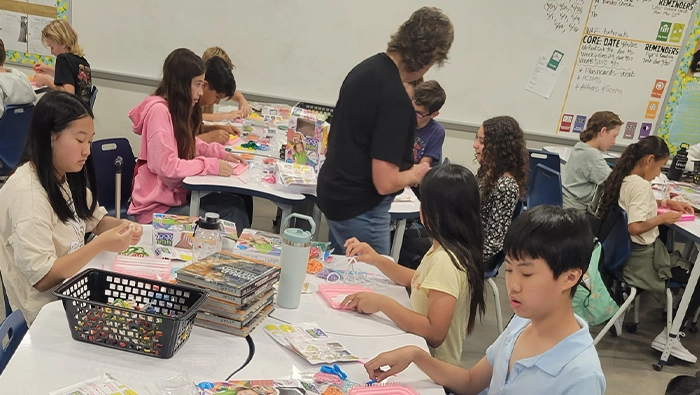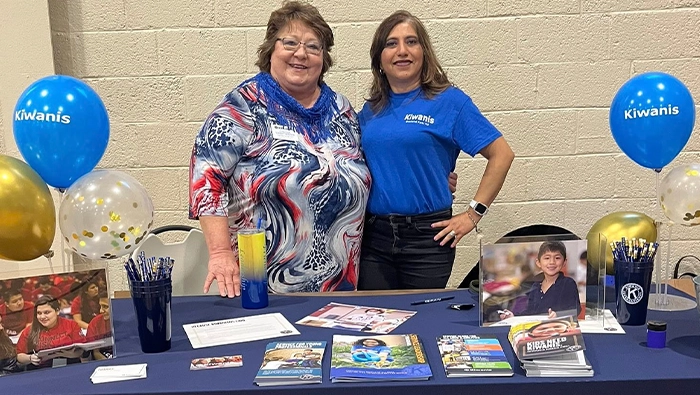
Kiwanis club funds STEAM projects
Members in California, U.S., help local teachers engage students’ interest in the curriculum.
By Pat Rasmussen, club member
In Glendora, California, U.S., the Kiwanis Club of Glendora Kiwaniannes is doing its part to help local teachers bring STEAM — that’s science, technology, engineering, art and math — into K-12 classrooms. By awarding 12 grants of US$800 each to teachers throughout the Glendora Unified School District, the club has been funding STEAM-related projects created by teachers for students.
“We’ve sponsored these grants for the past 10 years, and we are always amazed at what teachers can do with just a little money to purchase supplies and equipment,” says club member Tricia Gomer, who has chaired the program since its inception. “It brings a wonderful 21st-century dynamic into the classroom.”
The bond between the club and the students was further strengthened when grant recipients were invited to a club meeting to talk about their projects.
One teacher used her grant to purchase a 3D printer to assist her in teaching STEAM-related topics. Two others collaborated to create a STEAM event for students in sixth through eighth grades, using the grant to purchase STEAM activity kits and bringing in guest speakers to talk about careers in STEAM fields.
Middle school students visited a nearby elementary school to help create a garden, using math skills to plot out the area and researching native plants to include in the garden. With funds from the Kiwanianne grant, they purchased plants and vegetables and built the garden alongside the elementary students. Three trees were also planted with financial help from the Kiwaniannes. The garden was officially introduced to the school on Earth Day, Aprill 22.
Teachers said the elementary students felt less afraid about moving to middle school because they had met and worked alongside those students to plant the garden.
A fourth- and fifth-grade teacher used her grant to buy film and editing equipment for her school’s student council, which wrote, filmed and edited a short video featuring their fellow students. The focus was on positive, socially conscious messages to consider the feelings of others.
A high school instructor used his grant to purchase plywood so that his students could use professional software and laser engravers to create business cards, Christmas ornaments and telephone stands. They added their creations to their portfolios to prepare for the local community college’s architecture exam. If they passed, they could earn 3 units of college credit.
“This is absolutely one of the best programs we fund each year,” says Rose Wentz, club president. “It sparks such creativity, learning and collaboration. We look forward to seeing what teachers will come up with for next year’s round of grants.”



